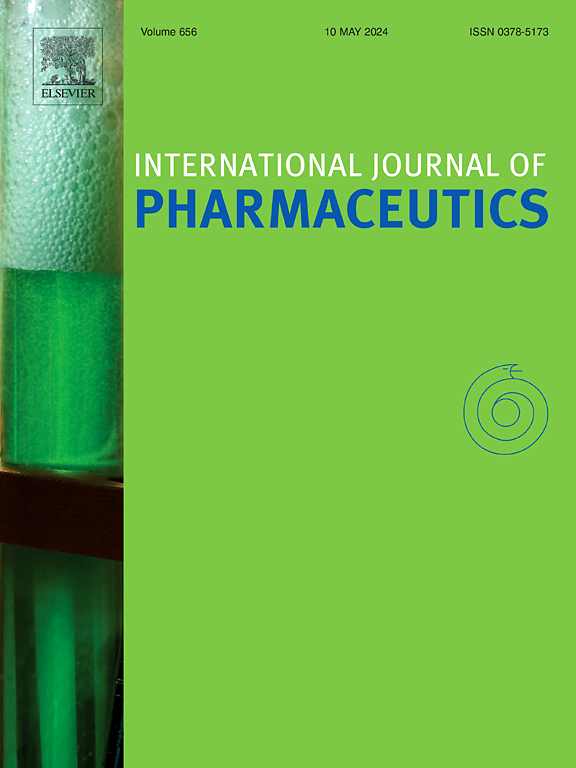Beyond the Hype: The potential and challenges of semi-solid extrusion 3D Printing in pharmaceutical applications through the lens of Portuguese 3D experts
IF 5.3
2区 医学
Q1 PHARMACOLOGY & PHARMACY
引用次数: 0
Abstract
In recent years, the technological landscape has experienced a notable surge in the exploration of 3D Printing technologies (3DPT), particularly as an additive manufacturing method. Among the various 3DPT available, semi-solid extrusion 3DP (SSE-3DP) has emerged as a prominent solution for pharmaceutical applications, owing to its versatility and adaptability for customization. Nevertheless, achieving further technological advancement is hindered by a myriad of challenges related to materials, process, and quality control. Therefore, this research aimed to explore, uncover, and critically discuss both the potential and the challenges of SSE-3DP, by capturing the insights, vision, and perspectives of Portuguese 3DP experts, through a focus group analysis. The focus group discussions revealed an initial sense of positivity, fascination, and novelty regarding the technology, later evolving into mixed emotions of doubt and aspiration, effectively highlighting both the challenges and opportunities that lie ahead for the advancement of SSE-3DP. Moreover, the analysis yielded a total of 148 sub-codes, related to materials, process, printers’ specifications, quality control testing, needs and lack of knowledge, solutions, business applications and personalization strategies. Notably, 3DP experts underscored the necessity for investment in multi-materials research, printer functionalities, process optimization through automation and artificial intelligence (AI) or advanced dynamic tools, and quality control using standard guidelines or machine learning models. Overall, this article provides a foundational framework for future research, addressing the gaps, needs, and solutions highlighted by 3DP experts.
超越炒作:通过葡萄牙3D专家的镜头,半固态挤压3D打印在制药应用中的潜力和挑战
近年来,技术领域经历了3D打印技术(3DPT)探索的显着激增,特别是作为增材制造方法。在各种可用的3DPT中,半固态挤出3DP (SSE-3DP)由于其通用性和定制适应性,已成为制药应用的突出解决方案。然而,实现进一步的技术进步受到无数与材料、工艺和质量控制有关的挑战的阻碍。因此,本研究旨在通过焦点小组分析,通过捕捉葡萄牙3d打印专家的见解、愿景和观点,探索、揭示和批判性地讨论SSE-3DP的潜力和挑战。焦点小组讨论显示了对这项技术最初的积极、迷恋和新奇的感觉,后来演变成怀疑和渴望的混合情绪,有效地突出了SSE-3DP前进的挑战和机遇。此外,分析共产生148个子代码,涉及材料、工艺、打印机规格、质量控制测试、需求和缺乏知识、解决方案、业务应用和个性化策略。值得注意的是,3d打印专家强调了在多材料研究、打印机功能、通过自动化和人工智能(AI)或先进动态工具进行流程优化以及使用标准指南或机器学习模型进行质量控制方面进行投资的必要性。总体而言,本文为未来的研究提供了一个基础框架,解决了3d打印专家强调的差距、需求和解决方案。
本文章由计算机程序翻译,如有差异,请以英文原文为准。
求助全文
约1分钟内获得全文
求助全文
来源期刊
CiteScore
10.70
自引率
8.60%
发文量
951
审稿时长
72 days
期刊介绍:
The International Journal of Pharmaceutics is the third most cited journal in the "Pharmacy & Pharmacology" category out of 366 journals, being the true home for pharmaceutical scientists concerned with the physical, chemical and biological properties of devices and delivery systems for drugs, vaccines and biologicals, including their design, manufacture and evaluation. This includes evaluation of the properties of drugs, excipients such as surfactants and polymers and novel materials. The journal has special sections on pharmaceutical nanotechnology and personalized medicines, and publishes research papers, reviews, commentaries and letters to the editor as well as special issues.

 求助内容:
求助内容: 应助结果提醒方式:
应助结果提醒方式:


